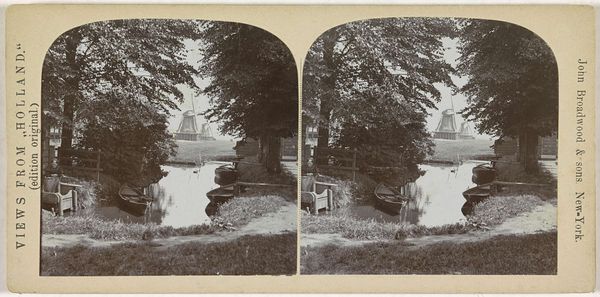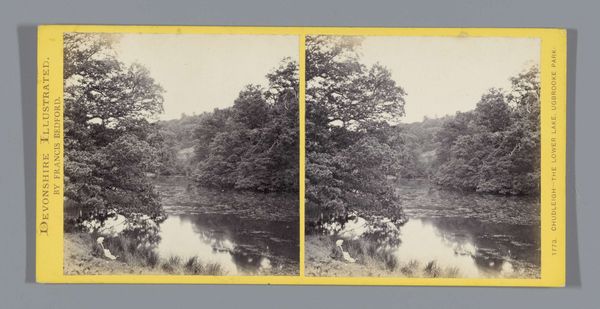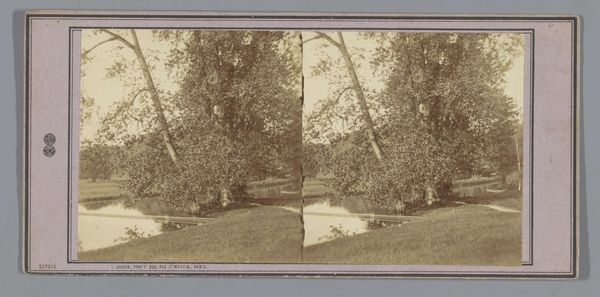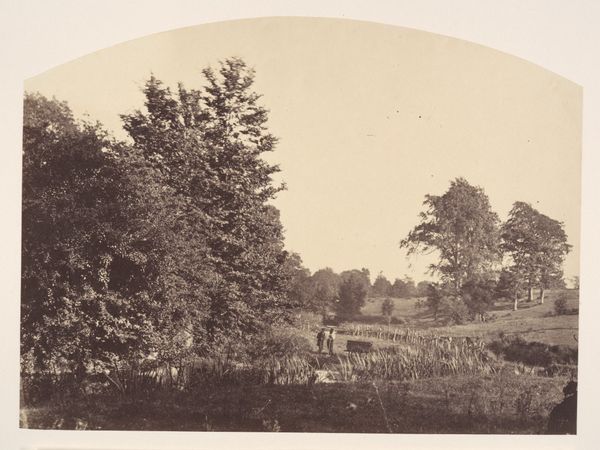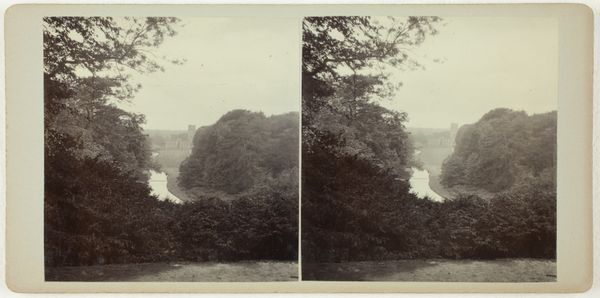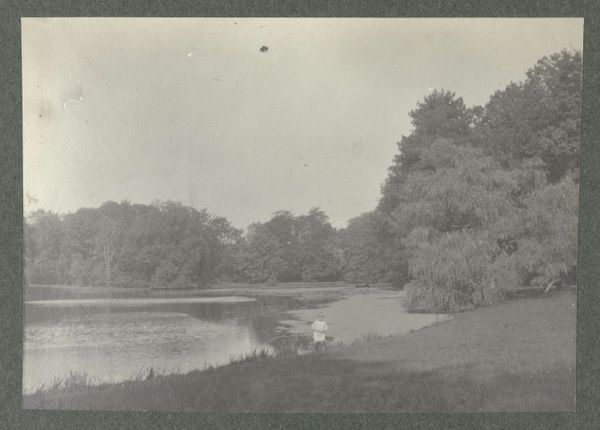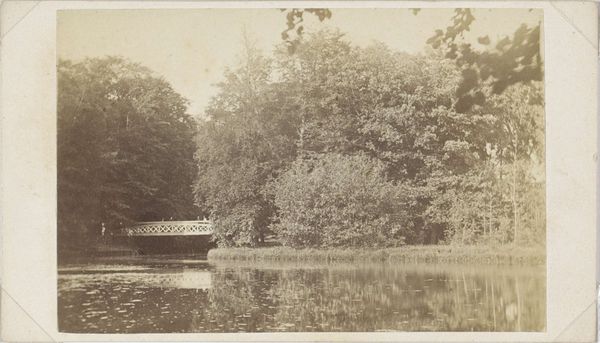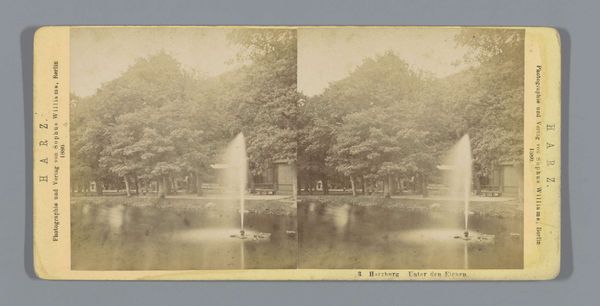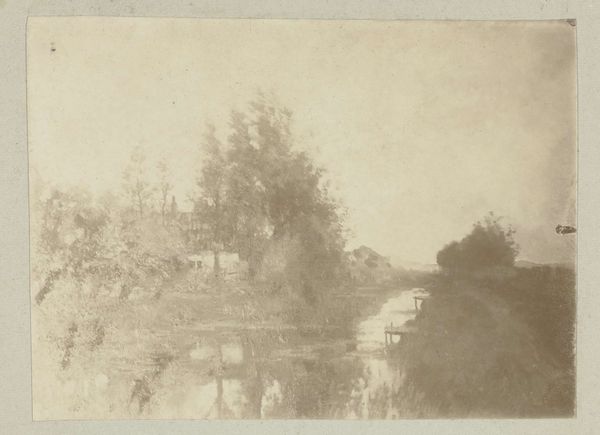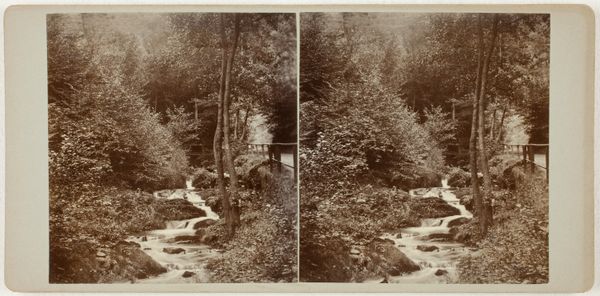
Dimensions: height 81 mm, width 175 mm
Copyright: Rijks Museum: Open Domain
Curator: Here we have a photograph titled "Landgoed Villa Nova, Breukelen," created sometime between 1859 and 1870 by Pieter Oosterhuis. It’s a landscape piece rendered in print, categorized under the broad umbrella of photography, and evokes elements of pictorialism and Romanticism. Editor: It’s so tranquil. The soft sepia tones create this dreamlike atmosphere, like stepping into a memory. The reflection in the water makes it almost symmetrical. What strikes you first about this image? Curator: For me, it’s the setting itself—the "Landgoed Villa Nova". During this period, such estates signified more than just wealth; they represented power, class, and a very specific lifestyle made possible through complex social structures and labor. Oosterhuis isn't simply capturing a landscape; he is presenting a curated vision of privilege. How does the composition contribute to this reading? Editor: I see the trees framing the villa, not visible but definitely implied, almost obscuring it, and the little rowboat in the foreground seems staged, inviting perhaps only certain viewers. Given the era, who was he inviting? Was photography becoming accessible? Or was it reinforcing an existing social order through idealized depictions like this? Curator: Exactly. Photography was still relatively new. Its accessibility was directly related to one’s socio-economic status. Commissioning or even owning images like these further solidified those distinctions. The romanticized lens, here, can also be viewed as a filter, selectively revealing and concealing elements to propagate an intended narrative about place, belonging, and, implicitly, exclusion. How would this estate owner expect such a photo to function publicly? Editor: I’d guess they anticipated the image reflecting the taste and affluence of the estate. As photography became more commonplace, these images served to maintain status distinctions, demonstrating refined aesthetics that set the owners apart. Photography thus becomes complicit in solidifying social stratification. It is really a photo about the gaze of those already in power. Curator: Precisely, and recognizing these layers adds complexity to our appreciation. Oosterhuis provides an opportunity to not just observe a peaceful waterscape, but reflect on what, and who, shaped its perception during the time. Editor: So, as we gaze into this seemingly serene reflection, we can consider who it was truly meant to reflect.
Comments
No comments
Be the first to comment and join the conversation on the ultimate creative platform.
